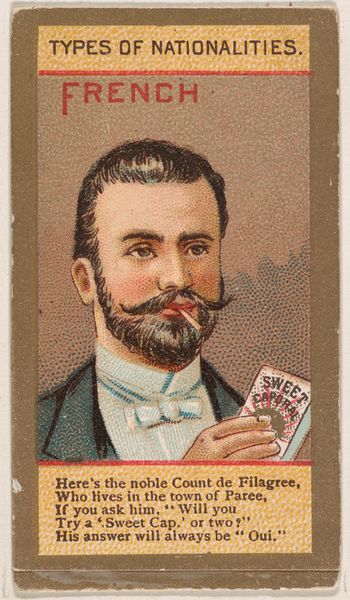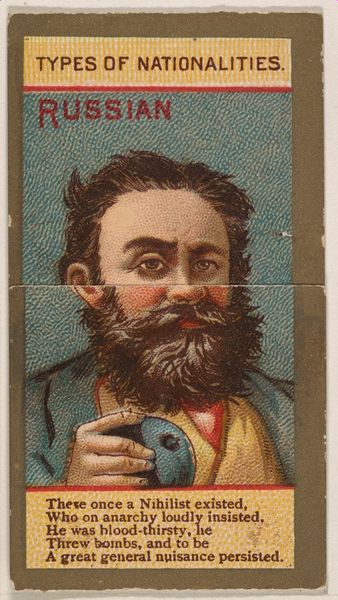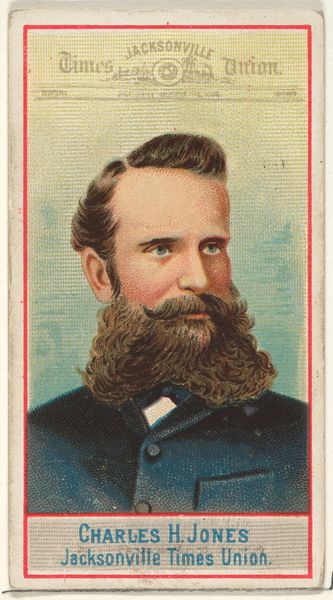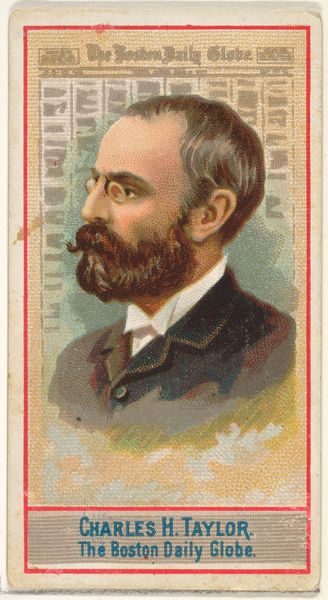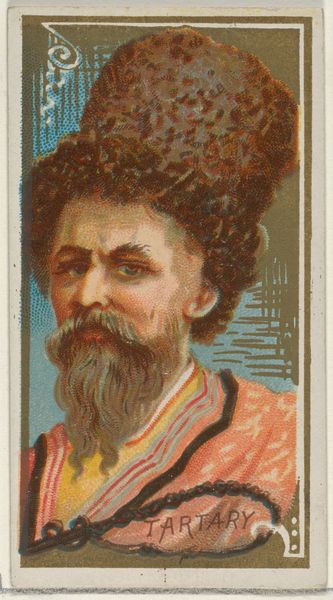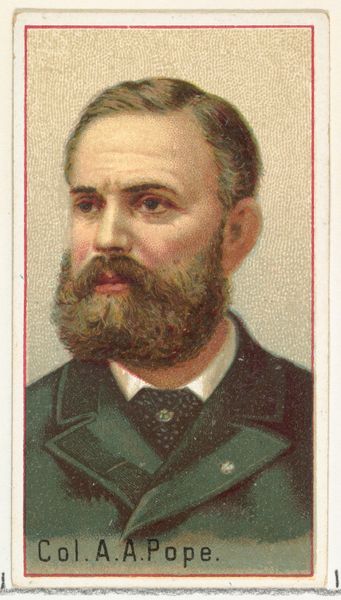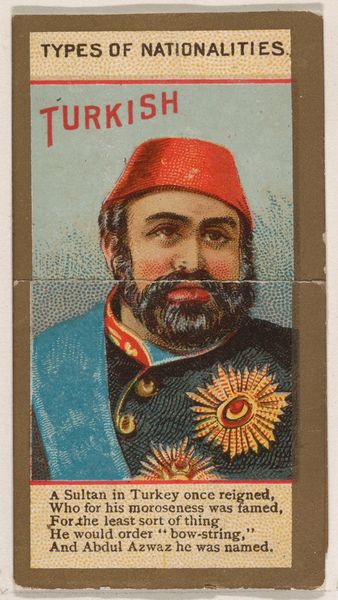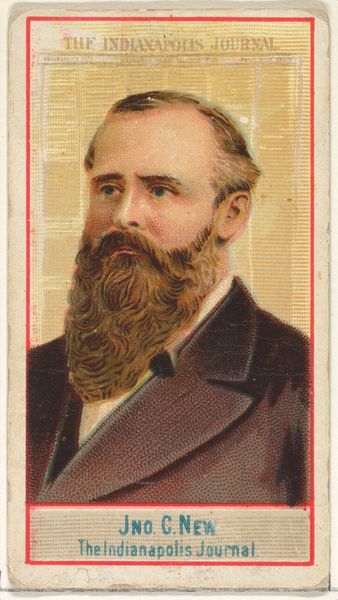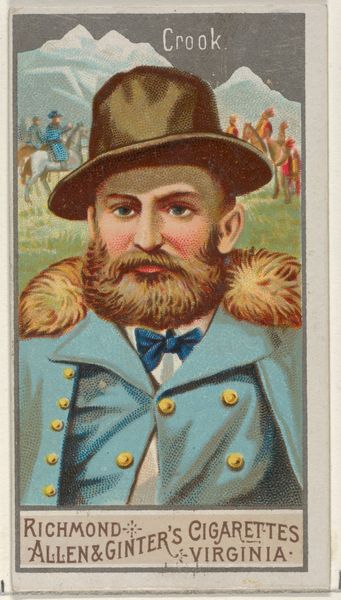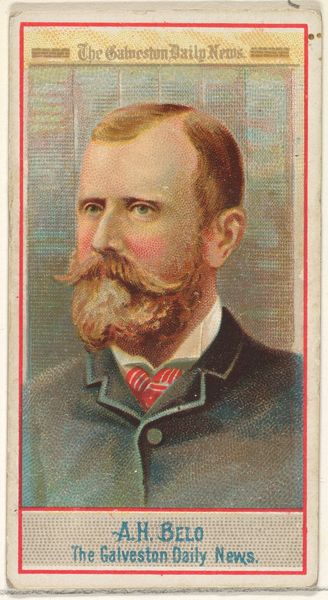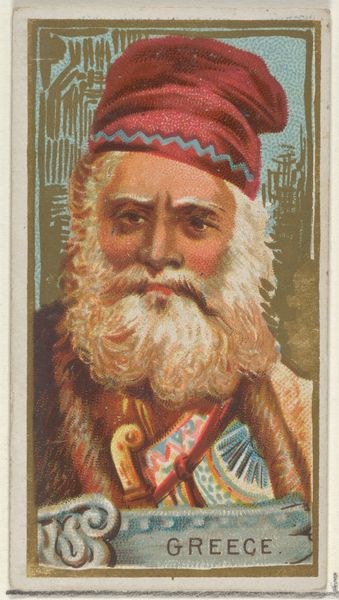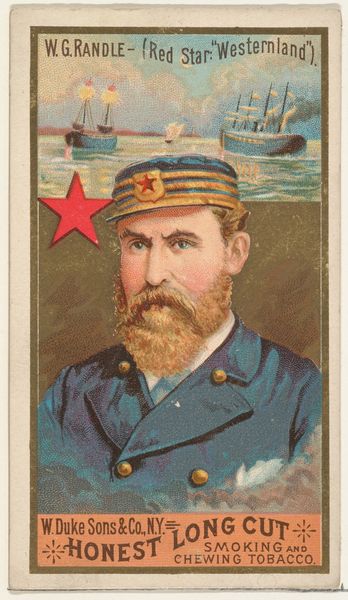
French, from Types of Nationalities (N240) issued by Kinney Bros. 1890
0:00
0:00
drawing, coloured-pencil, print
#
portrait
#
drawing
#
coloured-pencil
# print
#
figuration
#
coloured pencil
#
19th century
#
men
#
watercolour illustration
#
history-painting
Dimensions: Sheet (Folded): 2 11/16 × 1 7/16 in. (6.8 × 3.7 cm) Sheet (Unfolded): 6 7/8 × 1 7/16 in. (17.4 × 3.7 cm)
Copyright: Public Domain
Curator: This print, titled "French, from Types of Nationalities," comes to us from 1890, made by Kinney Brothers Tobacco Company. The work employs colored pencil, a somewhat unusual medium for printed ephemera. I'm immediately struck by how this commercial product attempts to depict, or rather typecast, an entire nationality. What jumps out to you? Editor: It's definitely the text underneath that portrait. "He lived in the days of Commune…his exit a great public boon.” So, they are using a colorful portrait alongside some serious propaganda. How do you interpret the purpose of distributing items like this one? Curator: That is the key! This wasn't made as 'high art.' It circulated as a free insert within tobacco products, deeply embedded within the burgeoning consumer culture of the late 19th century. The image production serves to manufacture consent and normalize the political climate. Consider the labor involved, too, from the factory workers producing the tobacco to the illustrators churning out these images, not to mention the consumer, the smoker, absorbing these messages. Do you think this card changed anyone’s opinion? Editor: Maybe, maybe not. But that wasn’t necessarily the goal, was it? It reinforced existing biases. And that brings a lot to bear on how we look at this image today. It's less about aesthetics and more about how the mechanisms of production, advertising, and distribution worked together to shape perceptions and ultimately power. Curator: Precisely. We are examining the mechanics of cultural production and its role in shaping social narratives. Think about how the materials themselves – paper, ink, tobacco – all converge within this small, potent object. Editor: It’s much more complex than I first realized; examining everyday items really helps you get into the context of the society. Curator: And challenges us to reconsider our relationship to material culture in our own time!
Comments
No comments
Be the first to comment and join the conversation on the ultimate creative platform.
